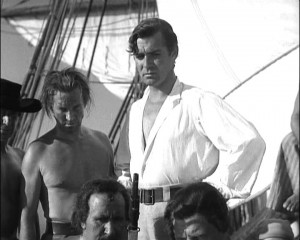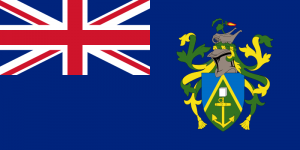Mutineers’ descendants have a flag
By James Breig
The recent birth of a new prince in Great Britain, the nation that at one time “ruled the waves,” calls to mind a real-life sea-faring story, “Mutiny on the Bounty,” set in the South Pacific.
The original book and many film versions of how an 18th-century crew rebelled against their taskmaster captain are well known. Not so familiar is what happened to the mutineers, where their descendants live now and what flag flies over them.

After rising up against Captain Bligh in 1789, the disgruntled sailors needed a place to hide from British retribution and found it on Pitcairn Island in the South Pacific. Because the island had been incorrectly charted, leaders of the uprising, most famously Fletcher Christian, concluded that the misplaced dot in the vast ocean would provide them with concealment and, therefore, safety.
For many years, they were right.
Pitcairn Islands, still populated by descendants of the defiant sailors, is now pluralized because it consists of tiny Pitcairn, Henderson, Ducie and Oeno islands. Ironically, considering that it was first settled by turncoats against England, Pitcairn is now a British Overseas Territory.

Despite having fewer than 100 inhabitants, the territory has its own flag, adopted in 1984. The flag has a dark blue field with the Union Jack in the upper left. On the right is an elaborate coat of arms that includes an anchor, which recalls Pitcairn’s origin as a haven for sailors, and a Bible, which reflects its religious heritage.
One wonders if the Bible is also a coded salute to the mutiny’s leader, whose surname was Christian. He has been portrayed in successive film versions by Errol Flynn, Clark Gable, Marlon Brando and Mel Gibson.
 Perched atop an armored helmet on the coat of arms are a wheelbarrow and a plant, reflective of the agriculture of the islands. The vegetation might also be a tip of the hat to the breadfruit that was the goal of the Bounty’s original mission: to collect samples of the plant in Tahiti, to return them to the West Indies and to determine if they could be cultivated there as a food staple for slaves.
Perched atop an armored helmet on the coat of arms are a wheelbarrow and a plant, reflective of the agriculture of the islands. The vegetation might also be a tip of the hat to the breadfruit that was the goal of the Bounty’s original mission: to collect samples of the plant in Tahiti, to return them to the West Indies and to determine if they could be cultivated there as a food staple for slaves.
The bounteous irony is that those who mutinied against their own ill treatment had no qualms about helping to oppress slaves.
